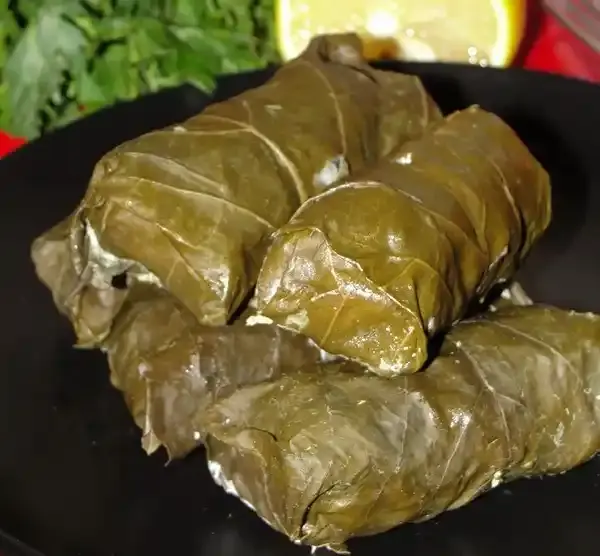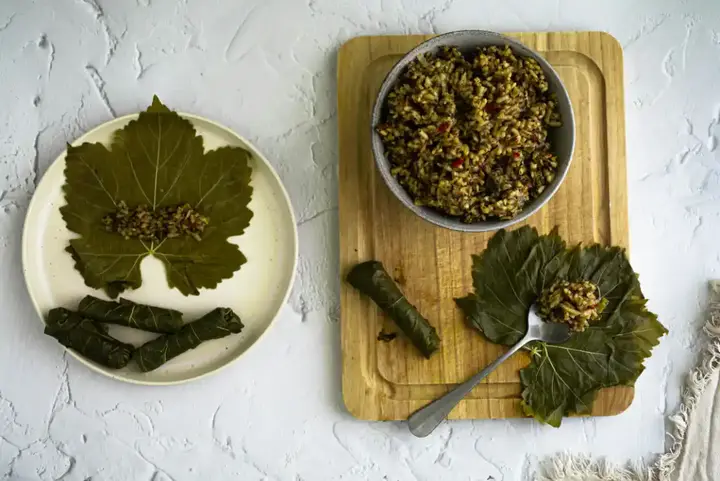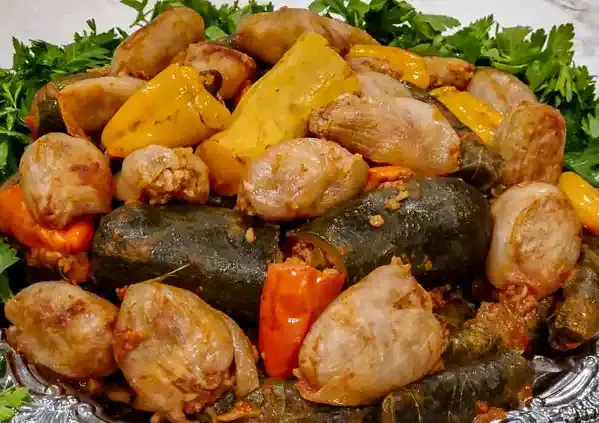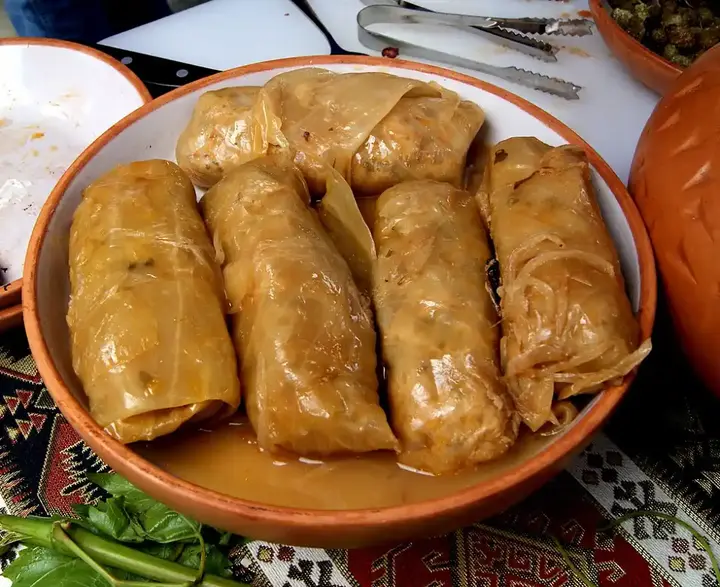Make Dolma Your Way: Dolma Can Be More Than Just Stuffed Grape Leaves

Dolma or yalangi is a grape leaf stuffed with rice and a peculiar mixture of spices. The word dolma derives from the Turkish verb dolmak, which means "stuffing", and this has led some food writers to suggest that dolma originated in the Topkapi Palace in the mid-fifteenth century. But this dish has a colorful history, and historians believe that it is much older, and that it did not even originate in Turkey. In this article, we examine two theories about the origin of this dish, and highlight how dolma developed uniquely in different regions, including Greece, Persia, Turkey, Iraq and Armenia, where each culture adapted the dish to local ingredients and flavors, leading to different versions. In conclusion, we present an easy recipe for the preparation of dolma.
Recommend
Genesis of the dish:

It is not known exactly where and when the dolma originated, but there are two theories about its origin: the first theory traces it back to Armenia two thousand years BC. According to this theory, dolma was made in Sardarapats 3,000 years ago. Due to military conflicts, Armenia became part of a larger empire. Armenian peoples and culture expanded to Greece, then Turkey, and then Iran. When Alexander the Great marched to Thebes in 335 BC, he was surprised to find that there were sumptuous dishes of food in an area suffering from severe food shortages. The dolma he saw, although made of simple ingredients, was impressive.
The second theory is that although the dolma is associated with the Ottoman Empire, the first dish was made more than two thousand years ago, and was prepared at the Minoan Palace in Crete.
Types of Dolma:

As dolma spreads across Asia, it has become clear that there must be more than one dolma –
Greek dolma: The traditional flavors of Greek cuisine (fresh lemon, dill, lots of fresh mint) are at the forefront of this Greek dolma. The roasted pine nuts added to the filling provide a bit of crunch, and the home-salted grape leaves are very tender. This Greek dolma is vegetarian and served at room temperature (if you try to eat it hot, it will break up). Finally, bring your own blue and white dishes, find a place in the shade, and pretend to be in Santorini.
Persian dolma: There are several ways to make Persian dolma different from Greek dolma: first Persian dolma adds ground meat to the filling, dried yellow peas are also a traditional part of Persian dolma, and then there are fresh tarragon and coriander which are used instead of mint. Minced meat can be omitted and make this dish purely vegan.

Turkish Dolma: There are several distinctive versions of dolma in Turkish cuisine. One of them uses viscera. In coastal areas, mussels and squid are chosen as a filling. One of the things that distinguishes Turkish dolma from those in other countries is the frugal use of fresh herbs. Instead, dried fruits (such as currants) and tomatoes are a regular part of the filling.

Iraqi dolma: In Iraqi dolma, grape leaves are bypassed. The author of this recipe shows us how to use other vegetables (sweet peppers, eggplants, zucchini, tomatoes). In winter, Swiss chard can be used instead of grape leaves. Iraqi dolma is very easy and really tasty - simmer stuffed vegetables (to your choice) over low heat in tomato paste broth and pomegranate molasses for a rich umami flavor.
Armenian dolma: Not a single style of dolma represents Armenian cooking, but countless types of fillings and vegetables. The spices used are unique, offering a warm blend of cinnamon, nutmeg, pepper, cloves and star anise. Armenian dolma uses bulgur instead of rice with a little sugar in boiling tomato soup liquid.
Suggested method:

Ingredients:
A tablespoon of olive oil
two chopped onions
A cup and a half of uncooked white rice
One and a half cups of hot water, or as needed to cover
Two tablespoons of tomato paste
Two tablespoons dried currants
Two tablespoons pine nuts
A tablespoon of ground cinnamon
A tablespoon of dried mint
A tablespoon of dried dill herb
A teaspoon of ground spices
A teaspoon of ground cumin
8 ounces grape leaves, drained and washed in warm water
Help:
1- Heat the oil in a medium saucepan over medium heat. Add the onion and stir until tender, about 5 minutes. Stir the rice, then add enough hot water to cover it. Cover and simmer until the rice is half cooked, about 10 minutes.
2- Remove the pot from the heat and stir in tomato paste, currants, pine nuts, cinnamon, mint, dill, spices and cumin. Allow the mixture to cool for about 15 minutes.
3- Prepare a large pot by placing an inverted dish on the bottom; this will protect the dolma from direct heat during cooking.
4- Cut the stems of the vine leaves and discard them. Put about a teaspoon of cooled rice mixture in the middle of the sheet. Fold the sides, then roll them into a cigar. Place in the prepared pot. Repeat to prepare the remaining rice.
5- Pour enough warm water to reach the bottom of the first layer of dolma. Cover and simmer for 30 to 45 minutes, or until rice is cooked through. Check the water level often and add more as needed.
The end:

As you can see, dolma is much more than stuffed grape leaves. You can use summer plants, and fresh vegetables that you can find. Prepare the filling base of your choice, use some new herbs and spices, and prepare a delicious sauce. Enjoy cooking, let your imagination run wild and make dolma your way.








